
Cherry blossoms are the beloved symbol of spring in Japan, and during their peak season, Japanese people will gather for ohanami (cherry blossom viewing) to admire the beautiful colors of their delicate flowers. This article will explain the ins and outs of ohanami culture, as well as introduce some must-see cherry blossom viewing spots and restaurants nearby!
When Is the Best Period for Cherry Blossom Viewing?
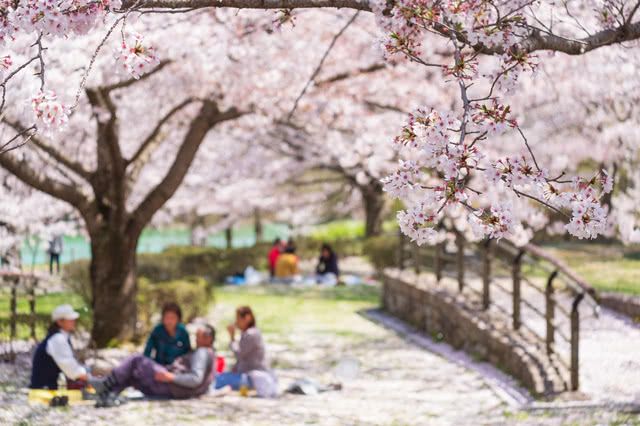
As the season approaches, the Japanese media begins announcing their predictions for the start and full bloom dates. Even the Japan Meteorological Agency issues an official cherry blossom forecast, making it a nationwide event.
The cherry blossom viewing period varies by region, with more temperate cities like Tokyo and Osaka peaking from late March to early April, while colder regions like Hokkaido come as late as early to mid-May.
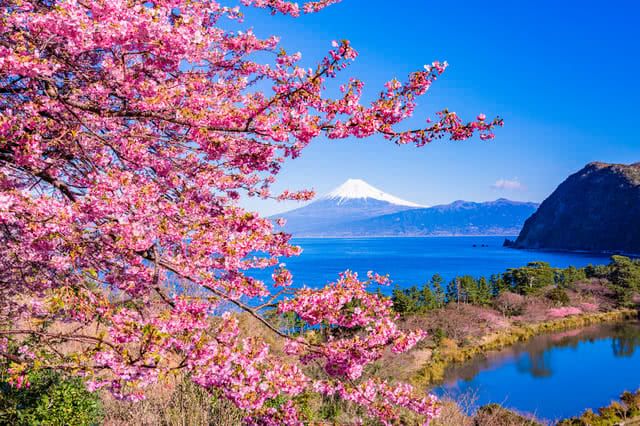
Japan’s cherry blossom forecasts focus on the Somei Yoshino variety, which has pale pink flowers. However, there are several other species of cherry trees that bloom at different times.
For instance, the yaezakura cherry (a general term for cherry blossoms with more than five petals) typically blooms about two weeks later than Somei Yoshino, while the Kawazu-zakura cherry, named after a famous cherry blossom spot in Shizuoka Prefecture, starts blooming as early as February, despite the chilly weather.
In warmer regions such as Okinawa, where Somei Yoshino struggles to flourish, the kanhizakura cherry becomes the highlight with its beautiful deep pink flowers that hang like bells. It blooms from late January to February and can be seen all throughout the Okinawan Islands.
*This picture shows Kawazu-zakura cherry blossoms in Nishiizu/Ita, Shizuoka Prefecture, one of the most renowned ohanami spots in Japan.
Cherry Blossom Viewing Customs in Japan
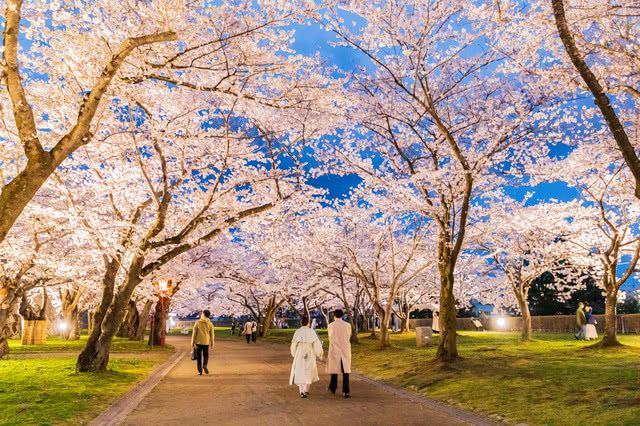
People will also visit famous gardens or promenades lined with cherry blossoms, many of which host cherry blossom festivals to celebrate. These festivals feature cherry blossom light-ups at night and street food stalls, adding to the fun and entertainment.
Recommended Cherry Blossom Viewing Spots in Tokyo

■ Ueno Park
Over 3 million people visit Ueno Park each year to witness its fabulous collection of cherry blossoms, which have enjoyed popularity since the Edo Period (1603–1867). Around 800 cherry trees dot the park, and its grounds are almost entirely covered by the picnic rugs of those wanting to experience the best of Tokyo’s cherry blossom scenery.
The Ueno Cherry Blossom Festival is held from late March to early April to celebrate the peak bloom, with lots of events for visitors to enjoy. Be sure to stay after sunset to admire the cherry blossoms brilliantly illuminated by lanterns throughout the park.
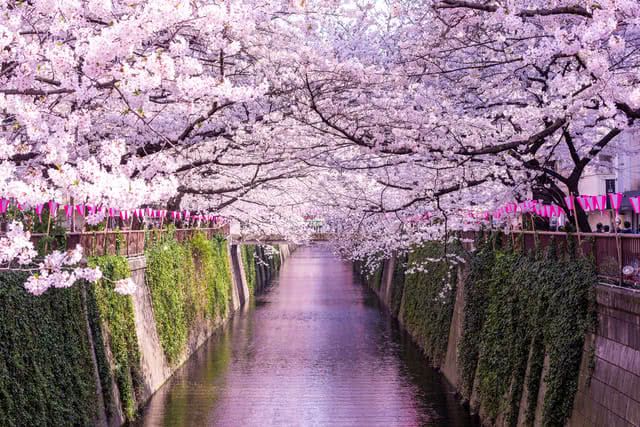
■ Meguro River
The Meguro River runs for around 4 km starting from near Ikejiri-Ohashi Station, and its banks are home to a whopping 800 cherry blossoms, making it one of Tokyo's premier ohanami spots. The narrow upstream segment of the river is entirely covered by flowers from both sides, while the wider downstream river has beautiful promenades inviting visitors to stroll.
Cherry blossoms along a roughly kilometer-long stretch of the river are also illuminated at night, rendering a magical scene as the tunnel of pink glows against the dark sky while reflecting upon the water's surface.
The Meguro River is also home to lots of unique boutique stores and stylish cafes, presenting a charming nook to discover Tokyo’s shopping scene along with cherry blossoms.
Recommended Cherry Blossom Viewing Spots in the Kansai Region
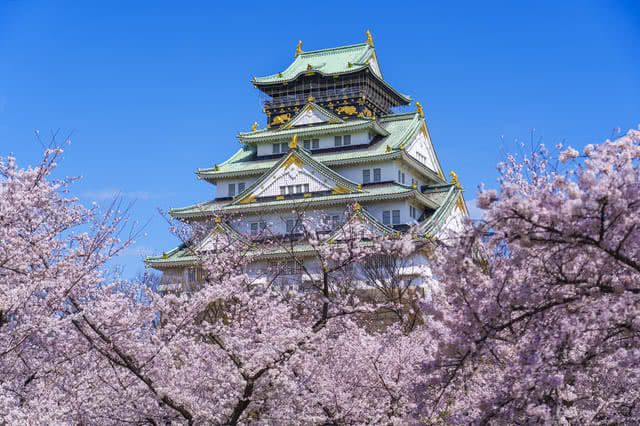
■ Osaka Castle Park (Osaka)
Osaka Castle Park is one of Osaka’s most popular tourist destinations, and its magnificent castle tower becomes even more photogenic when framed by 3,000 blooming cherry trees, including a grove of 300 in the stunning Nishinomaru Garden. The park extends its hours until 9:00 pm for the Cherry Blossom Night Viewing event, allowing visitors to snap photos of illuminated cherry blossoms beside the castle tower.
Food stalls are also set up in the park’s Citizen's Forest and Forest of Memorial Trees, serving delicious local delicacies like takoyaki (octopus and other ingredients fried in a ball of batter made from flour, dashi broth, and eggs).
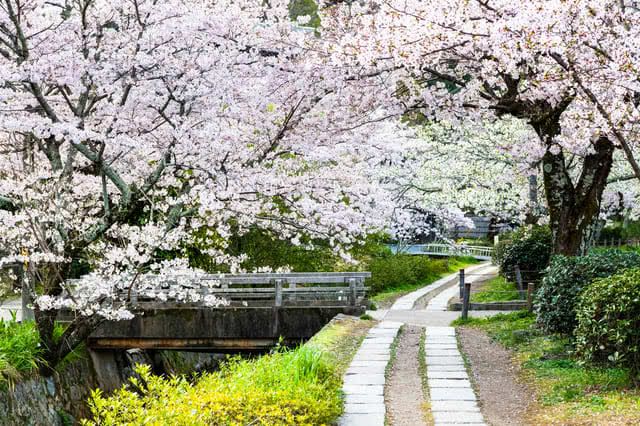
■ Philosopher's Path (Kyoto)
The Philosopher's Path is an iconic Kyoto attraction named after Kitaro Nishida, a famous Japanese philosopher who used to walk it while lost in contemplation. The path stretches for about 2 kilometers between Ginkaku-ji Temple and Eikando Temple, following a canal directly connected to Lake Biwa, Japan’s biggest lake. Approximately 400 cherry trees adorn the canal, including Somei Yoshino, Oshima-zakura, Yaezakura, and weeping cherry blossoms. During full bloom, they engulf the path in a flowery tunnel before their petals fall and flutter into the water, painting an otherworldly scene. Be sure to also explore the nearby temples along the path, too!
Enhance Your Ohanami Experience With Exquisite Dining
1. Wagyu Yakiniku Isshin
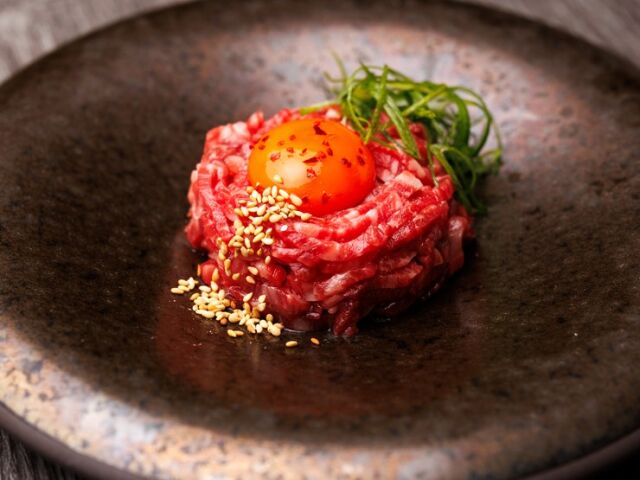
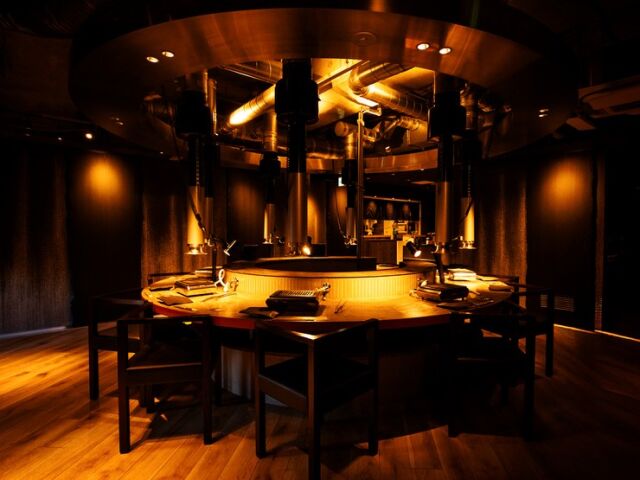
Wagyu Yakiniku Isshin
Closed: None
Average price: [Dinner] 7,000 JPY
Access: 2-minutes walk from Nakameguro Station on the Tokyu Toyoko Line and Hibiya-Nakameguro Station on the Tokyo Metro Fukutoshin Line
Address: 7F, GEMS Nakameguro, 2-13-3, Kami-meguro, Meguro-ku, Tokyo Map
More Details Reservation
2. Sushi Onikai
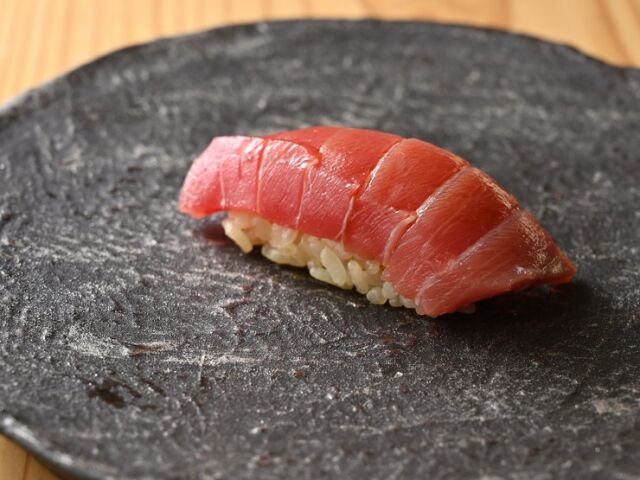
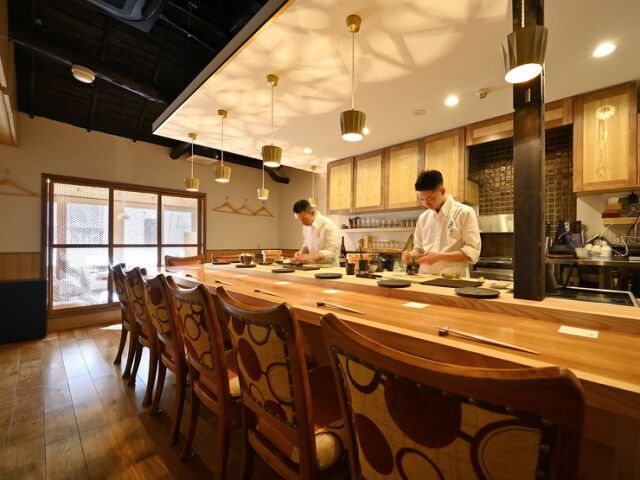
Sushi Onikai
Closed: Irregular
Average price: [Dinner] 12,000 JPY
Access: 3-minute walk from Nakameguro Station on the Tokyu Toyoko Line
Address: 2F, 2-18-11, Kamimeguro, Meguro-ku, Tokyo Map
More Details Reservation
3. Gyujutsu Kuroobi
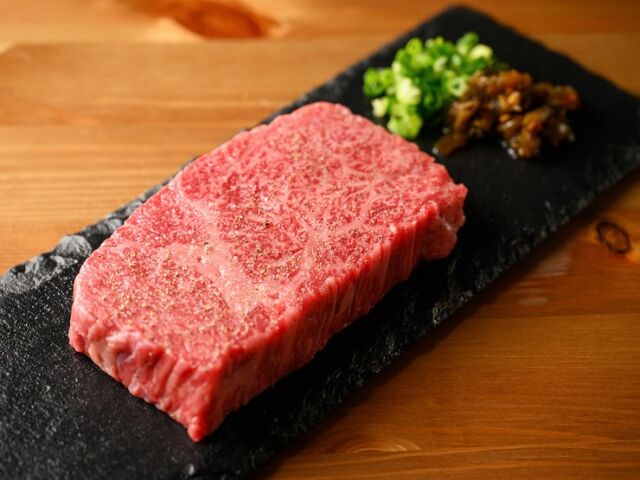
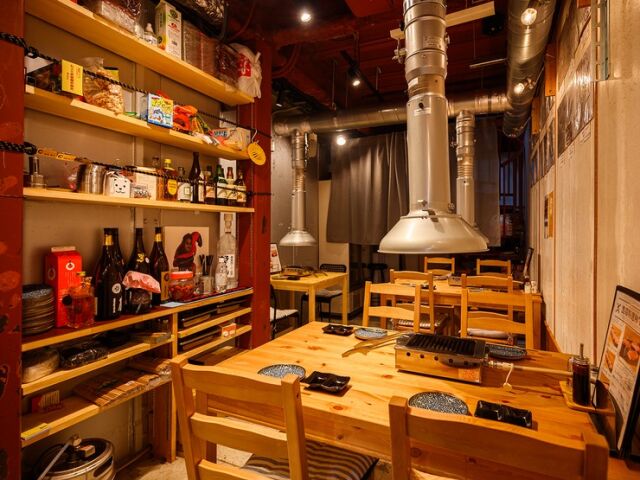
Gyujutsu Kuroobi
Closed: Sunday
Average price: [Dinner] 8,000 JPY
Access: About 2-minute walk from Okachimachi Station on the JR Yamanote Line and Keihin-Tohoku Line / About 10-minute walk from Ueno Station on the JR Lines
Address: 5-10-11, Ueno, Taito-ku, Tokyo Map
More Details Reservation
4. SAI. teppan Tenjinbashi

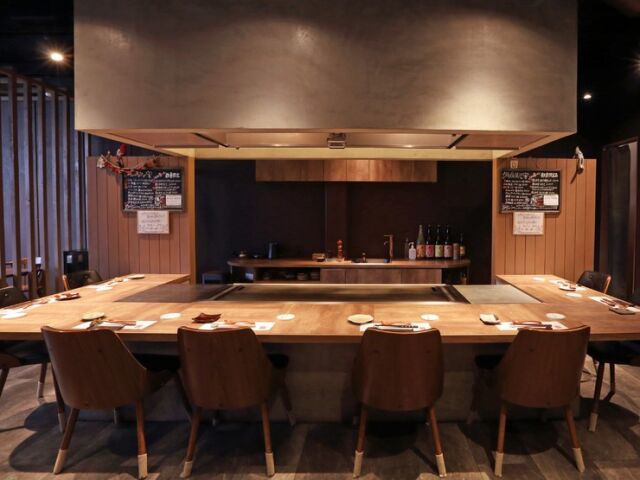
SAI. teppan Tenjinbashi
Closed: Monday, Tuesday
Average price: [Dinner] 10,000 JPY / [Lunch] 3,000 JPY
Access: 2-minute walk from Exit 12 of Tenjimbashisuji 6-chome Station. Go down the alley on the left, pass Tenjinbashisuji Shopping Street, and turn right at the crossroads. The destination will be on your right.
Address: 201, Ciel Bleu Tenjinbashi, 5-5-28, Tenjinbashi, Kita-ku, Osaka-shi, Osaka Map
More Details Reservation
5. Japanese Omakase Restaurant YOSAKURA
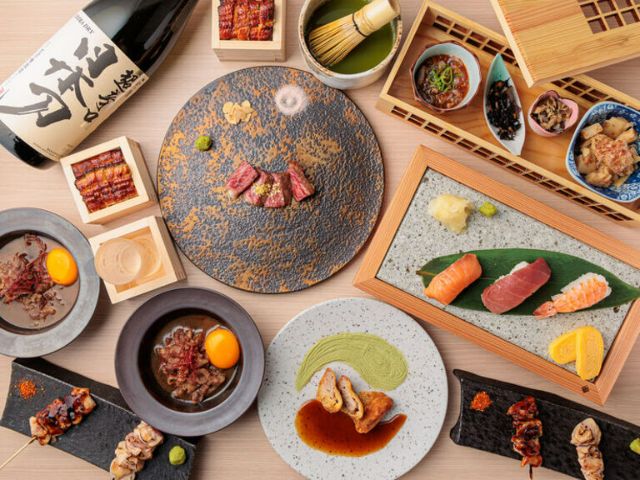
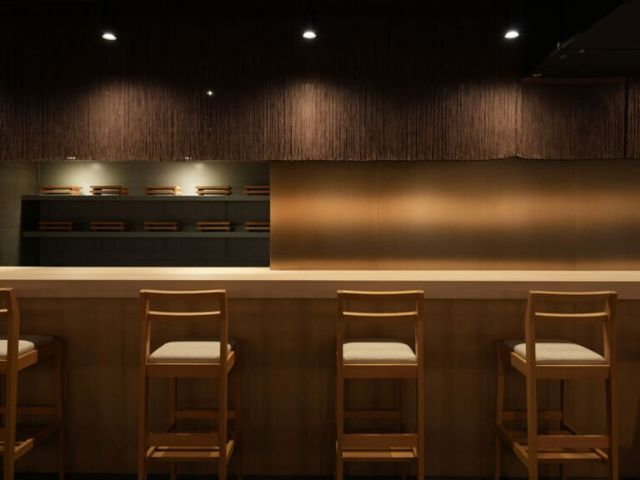
Japanese Omakase Restaurant YOSAKURA
Closed: None
Average price: [Dinner] 7,000 JPY
Access: 1-minute walk from Nagahoribashi Station Exit 7
Address: 1F, Realino Higashi-Shinsaibashi Bldg., 1-4-21, Higashi-shinsaibashi, Chuo-ku, Osaka-shi, Osaka Map
More Details Reservation









![Azabudai Hills [SUMI] (Janu Tokyo) ~ Editor's Afterword by the Editor-in-Chief of Japan's Gourmet Site](https://rimage.savorjapan.com/svj/image/discover_oishii_japan/6536/article_head_150x105z.jpg)









